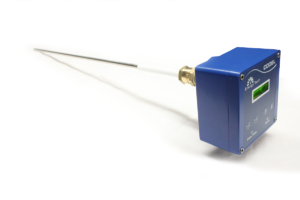El uso de monitores de emisiones continuas en plantas de placas de yeso
El uso de monitores de emisiones continuas (CEMS) en plantas de placas de yeso
Plasterboard plants are critical to the construction industry, producing essential building materials like drywall. During the manufacturing process, heating gypsum and other raw materials releases several types of emissions, including harmful pollutants. These include sulphur oxides (SOx), nitrogen oxides (NOx), particulate matter (PM), and volatile organic compounds (VOCs). Continuous Emission Monitoring Systems (CEMS) help plasterboard plants comply with strict environmental regulations. They also play a key role in supporting efforts to optimize production efficiency, thereby improving overall operational performance.
CEMS para el cumplimiento y la excelencia operativa en la fabricación de placas de yeso
Los CEMS permiten a las plantas de placas de yeso monitorear continuamente las emisiones, brindando datos en tiempo real sobre los contaminantes clave para garantizar el cumplimiento de las estrictas normas ambientales. Los organismos reguladores hacen cumplir los límites de emisiones y el monitoreo continuo ayuda a los operadores a cumplir con las normas al proporcionar una detección temprana de cualquier exceso. En la producción de placas de yeso, las fuentes de emisión clave incluyen hornos, secadoras y procesos de calcinación, donde se calienta y procesa el yeso crudo. Al usar CEMS, los operadores pueden ajustar estos procesos, minimizando las emisiones nocivas y asegurando operaciones más fluidas.
Más allá del cumplimiento normativo, los datos CEMS ayudan a las plantas a mejorar la eficiencia operativa. Al identificar tendencias en las emisiones, los fabricantes de placas de yeso pueden optimizar su uso de energía, reducir los desechos y mejorar la calidad del producto. Esto no solo conduce a un proceso de producción más limpio, sino que también ayuda a reducir los costos al optimizar las operaciones y reducir el consumo de energía, lo que genera una línea de producción más sustentable y rentable.
Por qué los CEMS de CODEL son ideales para plantas de placas de yeso
CODEL International Ltd. ofrece sistemas de monitoreo de emisiones específicamente diseñados para los entornos desafiantes de las plantas de placas de yeso. Nuestras soluciones están diseñadas para soportar altas temperaturas y entornos con mucho polvo, lo que garantiza un rendimiento constante en las condiciones que son comunes en la producción de placas de yeso. El monitor de polvo EnergyTech 301 de CODEL es un excelente ejemplo de tecnología que se adapta a estas demandas. El EnergyTech 301 utiliza tecnología triboeléctrica para monitorear las emisiones de partículas con precisión. Requiere un mantenimiento mínimo, tiene un proceso de instalación simple y está diseñado para entornos con niveles de polvo fluctuantes, ideal para plantas de placas de yeso.
Además de la monitorización de partículas, las soluciones CEMS de CODEL ofrecen medición en tiempo real de gases como SOx, NOx y CO, lo que garantiza el pleno cumplimiento de las normativas medioambientales. Nuestros sistemas proporcionan datos precisos que ayudan a los operadores de las plantas a gestionar las emisiones de forma proactiva, evitando multas costosas y tiempos de inactividad no planificados. Los bajos costes de instalación y operación de los CEMS de CODEL los convierten en una inversión inteligente para las plantas de placas de yeso que buscan equilibrar el cumplimiento con la rentabilidad.
Además, los monitores de emisiones de CODEL cuentan con informes y análisis de datos avanzados, lo que permite a los gerentes de planta tomar decisiones informadas sobre cómo mejorar los procesos de producción y el desempeño ambiental. Al implementar la tecnología CEMS de CODEL, las plantas de placas de yeso pueden reducir sus emisiones, mejorar la eficiencia operativa y contribuir a una producción de materiales de construcción más sustentable.
Productos adecuados
El EnergyTech 301 es un monitor de polvo eléctrico tribo de bajo costo que utiliza tecnología comprobada y proporciona resultados precisos y rápidos.
Polvo
Un dispositivo óptico de un solo paso que utiliza luz visible para medir la opacidad y el polvo dentro de los gases de combustión.
Opacidad / Polvo
Haga una pregunta
Para obtener más información sobre cualquiera de nuestros productos, rellene nuestro formulario de consulta y un miembro del personal le responderá lo antes posible.
También puede llamar al: +44(0)1629 814351



